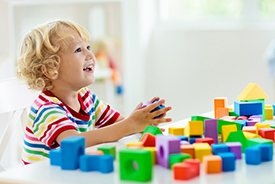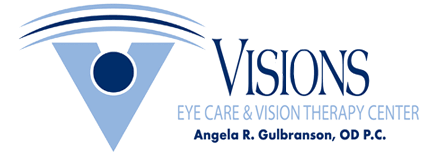Pediatric Occupational Therapy
What is Pediatric Occupational Therapy?
 Pediatric occupational therapy focuses on helping children develop the skills they need to grow into functional, independent adults. Physical impairment, impaired sensory processing, injuries and a host of other issues can hamper a child’s ability to perform common tasks or progress normally through the stages of social or cognitive development.
Pediatric occupational therapy focuses on helping children develop the skills they need to grow into functional, independent adults. Physical impairment, impaired sensory processing, injuries and a host of other issues can hamper a child’s ability to perform common tasks or progress normally through the stages of social or cognitive development.
The longer a child goes without learning these skills, the more the problem compounds as the child ages—which makes the skills of a pediatric occupational therapist critical to their patients.
 Pediatric occupational therapy can benefit children who fall into several categories, from premature infants, to kids with ADHD, to children struggling to read or write. What areas can pediatric occupational therapy address? Consider the following list:
Pediatric occupational therapy can benefit children who fall into several categories, from premature infants, to kids with ADHD, to children struggling to read or write. What areas can pediatric occupational therapy address? Consider the following list:
- Cognitive skills – remembering letters, shapes, and sequences
- Fine motor skills – finger dexterity, wrist and forearm control, and hand strength
- Gross motor skills – balance, strength, postural control, and body coordination
- Self-care tasks – dressing (including use of fasteners and shoe tying), bathing, and self-feeding
- Social skills – taking turns, transitioning between tasks or activities, listening, maintaining personal space, and following directions
When working with children, pediatric occupational therapists often incorporate play into practice as a way of motivating them and reducing any anxiety or fears they might feel toward therapy. Play can involve games, toys, puzzles, songs or physical activities. In all cases, the goal of pediatric occupational therapy is not only to help children adequately progress but to challenge them appropriately at the “just- right” level, helping to build self-esteem and confidence when it comes to their capabilities and aptitude.
Can My Child Benefit from Occupational Therapy (OT)?
Who may benefit from OT?
Some conditions for which your child may benefit from OT services are:
- birth injuries or birth defects
- sensory processing disorders
- attention difficulties
- traumatic injuries (brain or spinal cord)
- learning problems
- autism/pervasive developmental disorders
- mental health or behavioral problems
- developmental delays
- post-surgical conditions
- neurodevelopmental disorders
- neurological conditions
- cancer
- anxiety or excessive worrying
- cerebral palsy and other chronic illnesses
- chromosomal abnormality (Down syndrome, Ehlers-Danlos syndrome, etc.)
- Tourette syndrome or chronic tic disorders
What can parents hope to see accomplished through OT?
 Occupational therapists work with children and their families to achieve the following results:
Occupational therapists work with children and their families to achieve the following results:
- help kids work on fine motor skills so they can grasp and release toys and develop good handwriting skills as well as perform self-care tasks (fasteners, shoe tying)
- address hand-eye coordination to improve kids’ play and school skills (hitting a target, batting a ball, copying from a blackboard, etc.)
- help kids with developmental delays learn basic tasks (such as bathing, getting dressed, brushing their teeth, and feeding themselves)
- help kids with behavioral disorders maintain positive behaviors in all environments (e.g., instead of hitting others or acting out, using positive ways to deal with anger, such as writing about feelings, breathing techniques, or participating in a physical activity)
- teach kids with physical disabilities the coordination skills needed to feed themselves, use a computer, or increase the speed and legibility of their handwriting
- work with kids who have sensory and attention issues to improve focus, body awareness, and social skills
Can your child benefit from occupational therapy?
Does your child have difficulty with, or do you have concerns for your child in the following areas?
- Behavioral concerns
- Transitioning from one place to another or from one activity to another
- Tolerating loud/busy environments
- Tolerating change in routine
- Difficulties with buttons or fasteners
- Handwriting concerns
- Behaviors associated with getting dressed or putting socks/shoes on
- Avoidance of messy activities such as finger painting, putting on sunscreen or lotion, or playing in the grass or sand
- Clumsiness/awkwardness
- Coloring or writing within the lines
- Cutting on a line
- Poor personal space/boundaries
- Poor self-concept or self-esteem
- Seems to be in constant motion
- Avoids participation in novel or new activities
- Fearfulness with swinging, riding bike, or being lifted into the air
- Often uses too much or too little force when completing a task
- Prefers playing independent of others or by him/herself
- Exhibits “class clown” like behaviors
- Poor eye contact
- Difficulty keeping up with peers
- Coordination difficulties
- Lacks hand dominance (3 years old)
- Difficulties falling or staying asleep
- Muscle weakness or fatigue
If you would like more information or have any questions about any of the above listed programs or to schedule an occupational therapy evaluation, please call (605) 271-7100.






